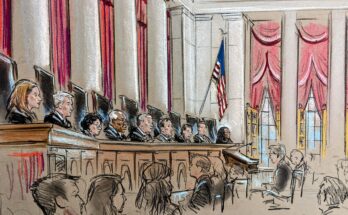Introduction:

The Student Loan Forgiveness Application in the realm of higher education, student loans can be a significant financial burden for many graduates. As the cost of education continues to rise, the prospect of student loan forgiveness has become a beacon of hope for those seeking relief from the weight of debt. This article serves as a comprehensive guide to understanding the student loan forgiveness application process, shedding light on eligibility criteria, types of forgiveness programs, and the steps involved in seeking financial reprieve.
The Need for Student Loan Forgiveness:
The Rising Tide of Student Debt:
The pursuit of higher education often comes hand in hand with student loans. While education is an investment in one’s future, the financial strain of repaying student loans can be overwhelming. The burden of student debt can impact individuals’ ability to make major life decisions, such as purchasing a home, starting a family, or pursuing further education.
Recognizing the challenges faced by borrowers, various student loan forgiveness programs have been established to provide relief. These programs aim to alleviate the financial stress associated with student loans and empower individuals to move forward with their lives.
Understanding Student Loan Forgiveness Programs:

1. Public Service Loan Forgiveness (PSLF):
- PSLF is a federal program designed for borrowers working in qualifying public service jobs. After making 120 qualifying monthly payments under a qualifying repayment plan while working for an eligible employer, the remaining balance on the borrower’s Direct Loans may be forgiven.
2. Teacher Loan Forgiveness:
- This program is targeted at teachers working in low-income schools. Eligible teachers may qualify for forgiveness of up to $17,500 on certain federal student loans after completing five consecutive years of teaching.
3. Income-Driven Repayment (IDR) Forgiveness:
- Borrowers on Income-Driven Repayment plans may be eligible for forgiveness after 20 or 25 years of qualifying payments, depending on the specific IDR plan. Any remaining balance at the end of the repayment period may be forgiven.
4. Perkins Loan Cancellation:

- Borrowers with Federal Perkins Loans may be eligible for loan cancellation for certain types of public service or for teaching in low-income schools. The cancellation amount varies based on the profession and the length of service.
5. Closed School Discharge:
- This discharge is applicable to Direct Loans, FFEL Loans, and Perkins Loans.
Eligibility Criteria for Student Loan Forgiveness:
1. Type of Loan:
- The eligibility for forgiveness depends on the type of federal student loan. Direct Loans, FFEL Loans, and Perkins Loans have different criteria and eligibility requirements.
2. Repayment Plan:
- Many forgiveness programs require borrowers to be on specific repayment plans, such as Income-Driven Repayment plans.
3. Public Service Employment:

- For PSLF, eligibility is contingent on employment in qualifying public service jobs. This includes working for government organizations, non-profit organizations, and other eligible employers.
4. Teaching Qualifications:
- Teachers seeking loan forgiveness must meet specific qualifications, including teaching at a low-income school and being a highly qualified teacher.
5. Income Level:
- Income-Driven Repayment Forgiveness is often linked to the borrower’s income level. Remaining balances may be forgiven after a certain number of qualifying payments based on income.
The Student Loan Forgiveness Application Process:

1. Assess Your Eligibility:
- Before diving into the application process, assess your eligibility for the specific forgiveness program. Review the requirements, repayment plans, and qualifying criteria to ensure you meet the necessary conditions.
2. Gather Documentation:
- Collect all required documentation, including proof of employment, loan details, and any other documentation specific to the forgiveness program. Accurate and complete documentation is crucial for a successful application.
3. Choose the Right Repayment Plan:
- Ensure that you are on the correct repayment plan, especially for programs like Income-Driven Repayment Forgiveness. Switch to the appropriate plan if needed before proceeding with the application.
4. Complete the Application Form:

- Each forgiveness program has its own application form. Complete the form accurately, providing all required information. Double-check for any errors before submission.
5. Submit the Application:
- Follow the submission instructions provided by the loan servicer or forgiveness program.
6. Monitor Progress:
- After submitting the application, monitor its progress. Be proactive in following up with the loan servicer or forgiveness program to ensure that your application is being processed.
7. Stay Informed:
- Keep yourself informed about any updates or changes to the forgiveness program. The landscape of student loan forgiveness can evolve, and staying informed ensures you are aware of any new opportunities or requirements.
Common Pitfalls to Avoid:

1. Incorrect Repayment Plan:
- Choosing the wrong repayment plan can jeopardize your eligibility for forgiveness. Ensure that you are on the correct plan based on the specific requirements of the forgiveness program.
2. Incomplete Documentation:
- Insufficient or incomplete documentation can lead to delays or denials. Thoroughly review the documentation requirements and submit all necessary paperwork with your application.
3. Missed Payments:
- Consistent and timely payments are often a requirement for forgiveness programs. Missing payments may reset the clock on qualifying payments or render you ineligible.




One Comment on “The Student Loan Forgiveness Application Guide”